PALM SPRINGS (Day 4 - part 1)
Our end destination today was Orange County (CA), however we took the longer route so we could pass through the Mojave desert.

This is the landscape that surrounds Las Vegas.

Outside of Jean, we stopped at a massive Chevron, which opened in 2018 with almost 100 gas pumps.


Primm was originally named State Line since it sits on the Nevada–California border. It was renamed in 1996 for its original developer, Earnest Jay Primm, to avoid confusion with Stateline in northern Nevada. As a casino town, it serves Californians who want to stop on the way to Vegas and as a last chance gamble for anyone leaving Nevada.


Entering California

The Ivanpah Solar Electric Generating System (opened in 2014) consists of three solar thermal power plants, making it the world's largest solar thermal power station.


One seemed turned off...


... while another looked smoldering hot!




Desert sand creeps onto the highway.


Joshua trees began to appear.




The town of Cima


Donkeys ... The Kelso Dunes cover 45 square miles, with the tallest dunes rising up to 650 feet.

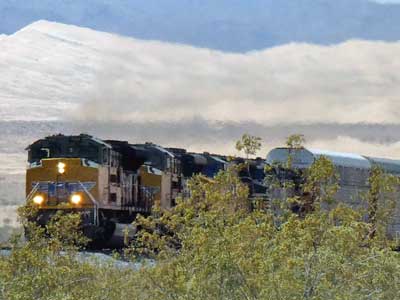

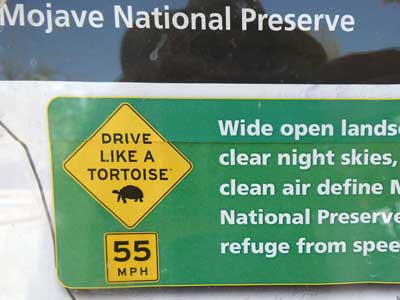
Mojave National Preserve is around 1.6 million acres (over 2,400 square miles), making it the nation's largest national preserve. It was established in 1994 at the same time as Joshua Tree and Death Valley National Parks.

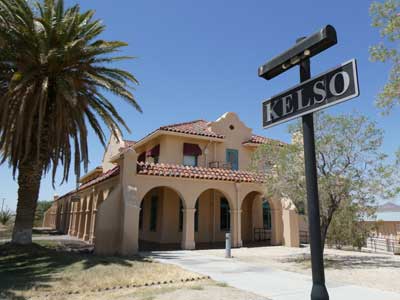


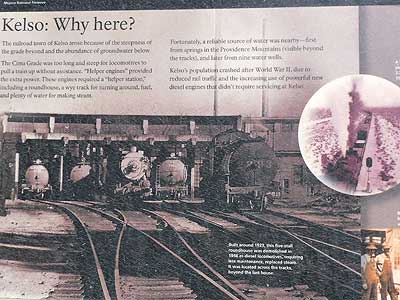
During WWII, troops, tanks, trucks, and iron ore (from a nearby mine) were shipped through Kelso by rail, creating the need for crews and mechanics. Temporary housing and stores were established for the workers and their families. Why here? Because there was reliable and abundant underground water (from springs and wells) for the steam-powered locomotives. In nearby Cima, the track grade was very steep, so helper engines were required to pull the trains. Built around 1923, Kelso had a 5-stall roundhouse and wye track (for turning trains around). This was demolished in 1948 as diesel locomotives replaced steam ones since diesels were more powerful and required far less servicing. After WWII, Kelso's population dropped drastically since rail traffic was reduced.


(right) Original depot
The current depot was built in 1924. It had a ticket and telegraph office, restaurant and dorm rooms for railroad employees. The small original building from 1905 was moved eastward along the tracks. The depot eventually became obsolete and was closed in 1985 with the intention to raze the building. Fortunately it was saved and turned into a visitor center in 2005.



Normally we could have gone in, but the depot was closed "Due to HVAC System Repairs" so we had to content ourselves with just peaking through the windows.


A stuffed tortoise ... An old office




From the mid-1940s to 1985, this two-cell strap-steel jail was used to confine drunks or other unruly individuals for a night or two. Fortunately a corrugated-tin shack was built around it to protect prisoners from the sun and rain. Before then, a refrigerated boxcar was used (and apparently heavily used for there was lots of drinking by miners and railroad workers in the old days). It was removed from Kelso in 1985 and ended up in the backyard of a home in Barstow. 20 years later, it found its way back here.
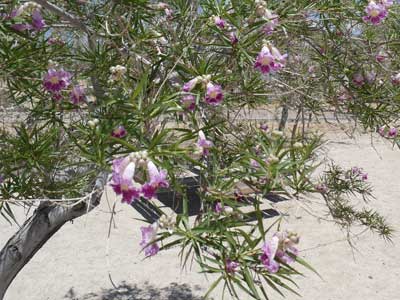

The desert willow it is not a true willow but a member of the catalpa family. It can grow to be either a shrub or small tree. The flowers bloom from May through September, with colors ranging from lavender to light pink. It's pollinated primarily by large bees such as carpenter bees and bumblebees.


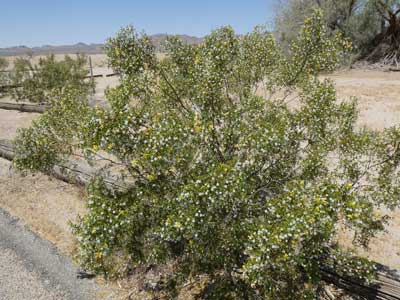
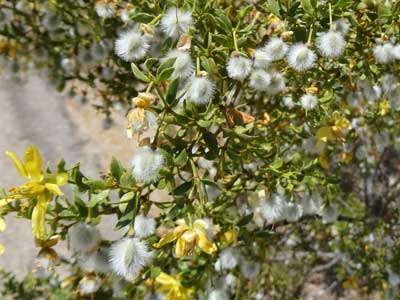
The Creosote bush (or greasewood) is a hardy, evergreen, southwestern desert shrub. The yellow flowers turn into these white fuzzy seed balls.
return • continue

